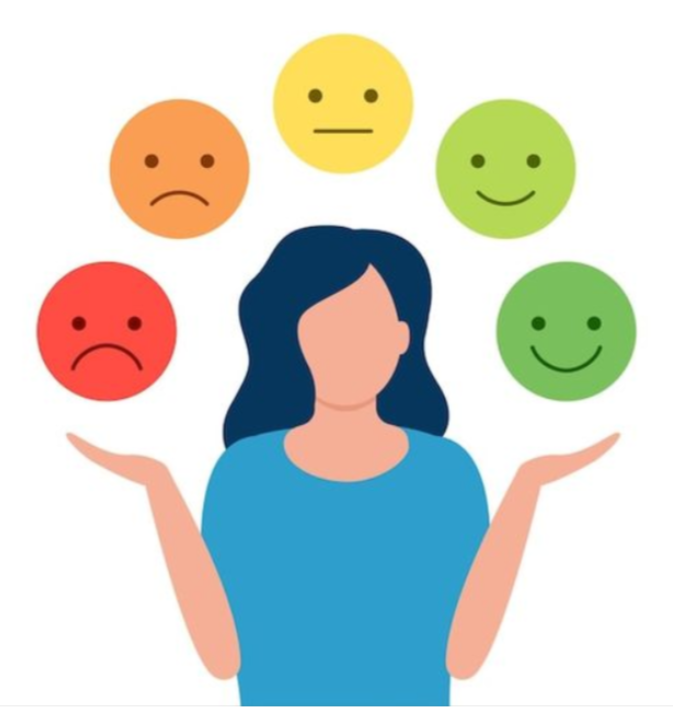When we discuss human experiences, “Feelings” and “Emotions” are often mentioned as the same. But the truth is they are not the same and are not interchangeable.
Their distinct aspects depend on their inner and external experiences. Emotions are automatic reactions to specific events, while feelings are the conscious experiences that follow emotions, shaped by personal thoughts and interpretations.
Throughout this article, we’ll explore these differences in more detail, explaining how they function and can be understood daily. Additionally, we’ll examine the types of feelings and provide insights into how they influence our overall well-being.
Are Feelings And Emotions Different?
Indeed, feelings and emotions are different yet closely related. Feelings emerge from the emotions we experience. They are conscious interpretations of emotions and can be long-lasting.
For example, the emotion of fear might result in anxiety if the mind continues to dwell on a specific threat, or you might have an emotional reaction of fear when you hear a loud noise.

While Emotions are immediate, automatic responses that arise without conscious thought. They’re triggered by both external events, like seeing a loved one, and internal states, such as hunger. Emotions are universal experiences shared by humans across cultures.
At last, understanding this difference can help each one to respond more thoughtfully rather than just reacting. Also, the BetterHelp team explains the psychology of emotions, which is medically reviewed by Dr. April Brewer, DBH, LPC, and Majesty Purvis, LCMHC.
Understand The Differences Between Feelings And Emotions
A deep understanding of feelings and emotions is quite important to have clear thoughts.
Here, you’ll get a quick overview of the main differences between feelings and emotions in the table below:
| Aspects | Feelings | Emotions |
|---|---|---|
| Definition | Conscious thoughts about the emotions you experience | Immediate reactions to events or situations |
| Duration | Can last longer | Short-lived and Quick |
| Cause | Based on mental associations, experiences, and thoughts | Triggered by external or internal events |
| Awareness | Requires self-awareness and reflection | It happens before conscious thought |
| Control | Can be managed or changed by thinking differently | They are hard to control when they happen |
| Timing | Happen after you become aware of the emotion | Happen first |
| Examples | Feeling anxious, sad, content, or proud | Fear, anger, happiness, surprise |
Now, let’s explore more detailed insights to help you understand the differences between feelings and emotions and gain clarity.
Emotions are raw and the body’s immediate response to events. Emotions often happen automatically before you even become aware of them. For instance, you may feel fear when someone startles you. This emotion is quick and usually fades after a few moments.

Feelings, in contrast, develop from your conscious interpretation of those emotions. After the initial fear, you might feel anxious if you reflect on why the event happened. Feelings can last much longer because they are tied to your thoughts and mental state.
Additionally, while emotions are often difficult to control, feelings can be managed or changed. You can control someone’s emotions by comforting them if they need it in any difficult situation.
How To Differentiate Between Feeling And Emotions?
Differentiating between feelings and emotions involves understanding their distinct characteristics and how they manifest in our lives. It can be tricky because they’re closely related. However, a few key points can help you distinguish them apart;

How Can You Analyze Emotions?
Emotions are immediate and instinctive in your brain’s response system. They happen first, like when you feel surprised upon hearing unexpected news. This emotional response is fast and automatic.
Once you become aware of this surprise, you might simplify the situation and develop a reaction based on it, such as feeling happy or disappointed, depending on the news.
How Can You Analyze Feelings?
Feelings, in contrast, require conscious awareness. They reflect how we process the emotions we experience. You might feel proud after winning an award because you interpret your success positively.
If you consciously think about the experience, that’s a feeling. When emotions become experiences, they evolve into feelings that count as experiences.
Understanding this difference will allow you to manage your emotional health better.After recognizing that feelings stem from emotions, that will help you be more mindful and take control of how you react in various situations.
In addition, you can become a high-vibration person who maintains positive energy consistently in your personal and even professional life.
Primary Types Of Feelings And Emotions
As we know, humans experience a wide range of “Feelings” and “Emotions” during life’s journey. Here, you’ll learn the primary types of each, which shape our daily interactions and experiences.
Types Of Feelings
Feelings emerge from emotions and can last longer as they relate to thoughts and experiences. Read the primary types of feelings below for more clarity:
1. Anxiety: It is a feeling that arises from worry or fear about potential future events.
2. Relief: It is a sense of ease or calm after something difficult or stressful has passed.
3. Guilt: A feeling of responsibility or regret for a perceived mistake or wrong action.
4. Loneliness: It is a complex feeling of isolation or disconnection from others, often resulting in sadness.
5. Empathy: Empathy feeling is the ability to understand and share another person’s feelings.
6. Pride: It is a feeling of satisfaction or pleasure in one’s achievements or qualities
7. Frustration: Frustration is the feeling that takes place when you face obstacles or challenges that seem hard to overcome.
Types Of Emotions
Emotions are quick, unconscious reactions to stimuli. They are short-lived and automatic, and we will discuss various types of emotions in this section.
1. Happiness: It is a positive emotion of joy, contentment, or satisfaction that occurs in response to a favorable event. Pleasant experiences or achievements often trigger it.
2. Sadness: It is an emotion of unhappiness or sorrow to loss or disappointment.
3. Fear: This emotional reaction is a perceived threat or danger, whether real or imagined.
4. Anger: Anger is an intense emotion often arising from frustration, hurt, or injustice.
5. Surprise: A brief emotional reaction to unexpected events, which can be positive or negative.
6. Disgust: This emotion is triggered by something unpleasant or offensive, like a bad smell or an immoral act.
7. Trust: A positive emotion involving confidence or belief in someone or something. It’s essential for forming social bonds and cooperation.
Also, note that you can control your emotions and pass through good feelings with the help of 100+ Mindvalley courses that will help you reshape your life positively.
Conclusion: Feelings And Emotions Are Different Experiences
You must have understood the difference between feelings and emotions, as both can greatly enhance our emotional intelligence and self-awareness.
“Emotions” are immediate reactions we experience unconsciously, while “Feelings” are the conscious interpretations that follow the short-term emotional experience.
By understanding to distinguish between the two, you can better manage your responses to situations and improve your overall well-being. It’s quite necessary to consider both “feelings” and “emotions” play essential roles in each person’s life.
Lastly, be mindful of both your emotions and feelings; this article will help you recognize the difference. This will allow you to control how you feel by adjusting your thoughts and focusing on building an effective life.
